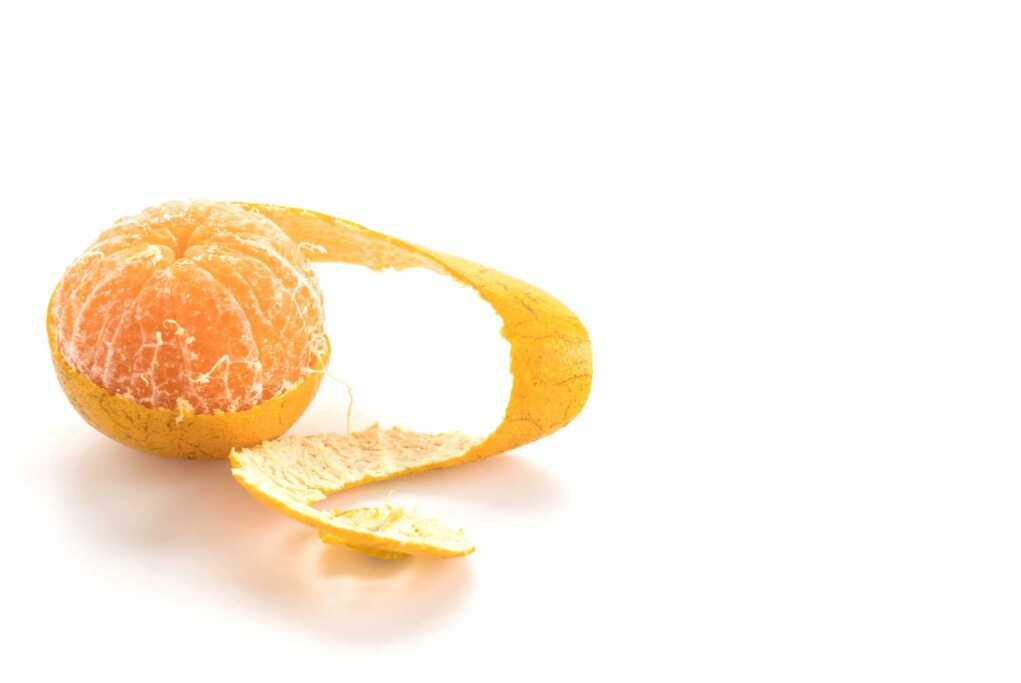
Could the key to fighting breast cancer be hiding in your fruit bowl? A surprising new study suggests that limonene, a natural compound in the peel of citrus fruits, may pack a powerful punch against this devastating disease
In a remarkable discovery, researchers have found that a compound in the humble orange may have potent anti-cancer properties. Limonene, a natural chemical found in the peel of citrus fruits, has shown promising results in a recent study on women with early-stage breast cancer, offering hope for a new, natural approach to preventing and treating this pervasive disease.1
The study, conducted by Miller et al. at the University of Arizona Cancer Center, recruited 43 women with newly diagnosed operable breast cancer who agreed to take 2 grams of limonene daily for 2-6 weeks before undergoing surgical tumor removal.1 The goal was to determine how well limonene would be absorbed into breast tissue and to assess its effects on biomarkers related to cancer risk and progression.1
Remarkably, after the limonene intervention, breast tissue samples showed high concentrations of limonene, averaging 41.3 micrograms per gram of tissue.1 This indicates that limonene is readily absorbed and can directly affect the target tissue. In contrast, levels of perillic acid, a metabolite of limonene, were much lower in breast tissue, suggesting that limonene itself is the active anti-cancer compound.1
Even more exciting were the changes seen in cyclin D1, a protein that regulates cell division and is often overexpressed in breast cancer.2 Tumor samples taken after the limonene intervention showed a significant 22% reduction in cyclin D1 expression compared to pre-intervention biopsy samples.1 By reducing cyclin D1, limonene may slow the aggressive growth of breast cancer cells.3 However, no significant changes were seen in markers of cell proliferation (Ki67) or cell death (cleaved caspase-3) in this short-term study.1
The implications of this research are profound. Limonene is a relatively non-toxic, natural compound found in foods that many people consume every day.4 It is concentrated in the orange peel, which is not something that is generally consumed. It contains potent compounds, which should be consumed only in very small amounts and carefully, and when utilized for disease applications should be supervised by a health professional. Notably, limonene has a much higher safety index when compared to conventional chemotherapy drugs used to treat cancers of the breast like doxorubicin. The LD50 (lethal dose for 50% of test animals) for limonene is 4,400-5,200 mg/kg in rats,5 whereas the LD50 for doxorubicin ranges from 4.6-13.5 mg/kg in mice depending on the route of administration.6 This means that d-limonene is up to 3 orders of magnitude less toxic than conventional chemotherapy agents like doxorubicin, notorious for their debilitating and sometimes lethal side effects. In short, this suggests that limonene may provide therapeutic benefits with substantially lower risks of toxicity compared to standard chemotherapy.
By optimizing limonene’s anti-cancer effects, we may be able to develop new preventive strategies or complementary treatments for breast cancer. Imagine a future where doctors recommend a daily glass of orange juice or a citrus fruit extract supplement as part of a breast cancer prevention or treatment plan.
Other Potential Therapeutic Applications of D-Limonene
In addition to its promising anti-breast cancer effects, research compiled by Greenmedinfo.com suggests that d-limonene may have a wide range of other potential health benefits:7
- Anti-inflammatory properties: Animal and human studies indicate d-limonene may help control inflammation in conditions like colitis.7
- Antioxidant effects: D-limonene exhibits antioxidant activity that may protect against conditions involving oxidative stress, such as diabetes complications, cataracts, liver cirrhosis, and doxorubicin toxicity.7
- Chemoprevention: Evidence from animal studies suggests d-limonene may help prevent cancers of the breast, liver, and skin.7
- Cholesterol and blood sugar management: Intake of d-limonene may benefit patients with high cholesterol and elevated blood sugar.7
- Gastroprotective actions: D-limonene and orange essential oil have been shown to protect against stomach ulcers in vitro.7
- Neuroprotection: Animal research indicates d-limonene may protect the brain and blood vessels from damage due to stroke in the context of hypertension.7
These diverse potential applications of d-limonene warrant further clinical research to fully harness its healing properties. The mounting evidence suggests that this simple, natural compound from citrus fruits may address a broad spectrum of health concerns.
Of course, more research is needed to fully understand limonene’s mechanisms of action and to determine the optimal dosage and duration of use for maximum benefit. The current study on breast cancer was small and lacked a placebo control group.1 Larger, randomized controlled trials will be necessary to confirm these promising findings and explore other applications.
Nevertheless, this study provides an exciting glimpse into the potential of natural compounds to combat cancer and promote health. It’s a reminder that sometimes the most powerful healing agents may be found in the simple, unassuming foods that nature provides. As we continue to explore the vast pharmacopeia of the natural world, we may discover more hidden gems like limonene that can transform our approach to disease prevention and treatment.
In the meantime, while it’s not yet definitive prevention or treatment advice, adding a few extra servings of citrus fruits (with perhaps a nibble or pinch of the peel) to your diet certainly couldn’t hurt. After all, foods are often the best medicine, and nature may hold the key to conquering our most formidable health challenges.
References:
- Miller JA, Lang JE, Ley M, et al. Human breast tissue disposition and bioactivity of limonene in women with early stage breast cancer. Cancer Prev Res (Phila). 2013;6(6):577-584. doi:10.1158/1940-6207.CAPR-12-0452
- Musgrove EA, Caldon CE, Barraclough J, Stone A, Sutherland RL. Cyclin D as a therapeutic target in cancer. Nat Rev Cancer. 2011;11(8):558-572. doi:10.1038/nrc3090
- Qie S, Diehl JA. Cyclin D1, cancer progression, and opportunities in cancer treatment. J Mol Med (Berl). 2016;94(12):1313-1326. doi:10.1007/s00109-016-1475-3
- Sun J. D-Limonene: safety and clinical applications. Altern Med Rev. 2007;12(3):259-264. https://pubmed.ncbi.nlm.nih.gov/18072821/
- ECHA Registration Dossier for D-limonene. Available at: https://echa.europa.eu/registration-dossier/-/registered-dossier/14444/7/3/1
- Gol’dberg LE, Filippos’iants ST, Shepelevtseva NG, Vertogradova TP. \[Toxicity, pharmacokinetics and pharmacodynamics of Soviet-made doxorubicin\]. Antibiotiki. 1983 Apr;28(4):298-303. Russian. PMID: 6859829.
- D-limonene Substance Monograph. Greenmedinfo.com. Available at: https://greenmedinfo.com/substance/d-limonene. Accessed April 11, 2023.
Important Notice: This article was originally published at https://greenmedinfo.com by GreenMedInfo Research Group where all credits are due.
Disclaimer
The watching, interacting, and participation of any kind with anything on this page does not constitute or initiate a doctor-patient relationship with Dr. Farrah™. None of the statements here have been evaluated by the Food and Drug Administration (FDA). The products of Dr. Farrah™ are not intended to diagnose, treat, cure, or prevent any disease. The information being provided should only be considered for education and entertainment purposes only. If you feel that anything you see or hear may be of value to you on this page or on any other medium of any kind associated with, showing, or quoting anything relating to Dr. Farrah™ in any way at any time, you are encouraged to and agree to consult with a licensed healthcare professional in your area to discuss it. If you feel that you’re having a healthcare emergency, seek medical attention immediately. The views expressed here are simply either the views and opinions of Dr. Farrah™ or others appearing and are protected under the first amendment.
Dr. Farrah™ is a highly experienced Licensed Medical Doctor certified in evidence-based clinical nutrition, not some enthusiast, formulator, or medium promoting the wild and unrestrained use of nutrition products for health issues without clinical experience and scientific evidence of therapeutic benefit. Dr. Farrah™ has personally and keenly studied everything she recommends, and more importantly, she’s closely observed the reactions and results in a clinical setting countless times over the course of her career involving the treatment of over 150,000 patients.
Dr. Farrah™ promotes evidence-based natural approaches to health, which means integrating her individual scientific and clinical expertise with the best available external clinical evidence from systematic research. By individual clinical expertise, I refer to the proficiency and judgment that individual clinicians acquire through clinical experience and clinical practice.
Dr. Farrah™ does not make any representation or warranties with respect to the accuracy, applicability, fitness, or completeness of any multimedia content provided. Dr. Farrah™ does not warrant the performance, effectiveness, or applicability of any sites listed, linked, or referenced to, in, or by any multimedia content.
To be clear, the multimedia content is not intended to be a substitute for professional medical advice, diagnosis, or treatment. Always seek the advice of your physician or other qualified health providers with any questions you may have regarding a medical condition. Never disregard professional medical advice or delay in seeking it because of something you have read or seen in any website, video, image, or media of any kind. Dr. Farrah™ hereby disclaims any and all liability to any party for any direct, indirect, implied, punitive, special, incidental, or other consequential damages arising directly or indirectly from any use of the content, which is provided as is, and without warranties.








